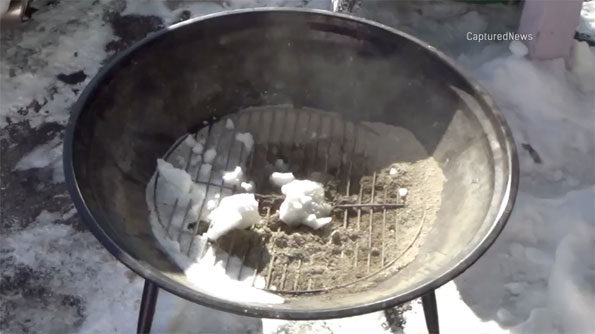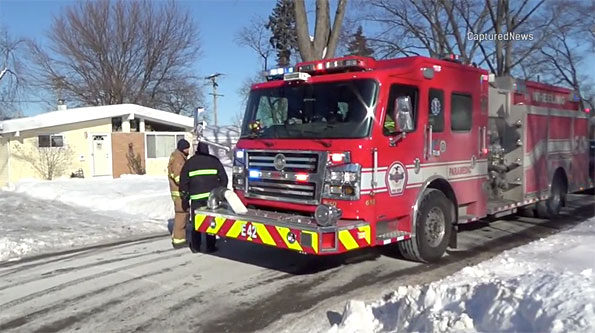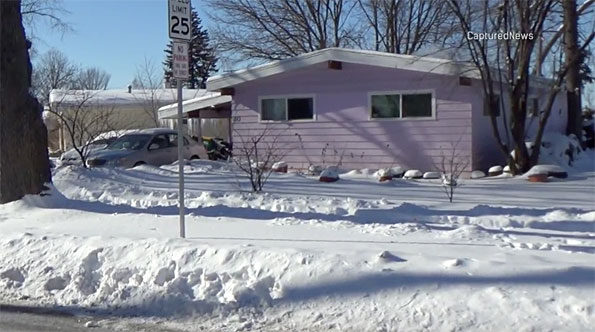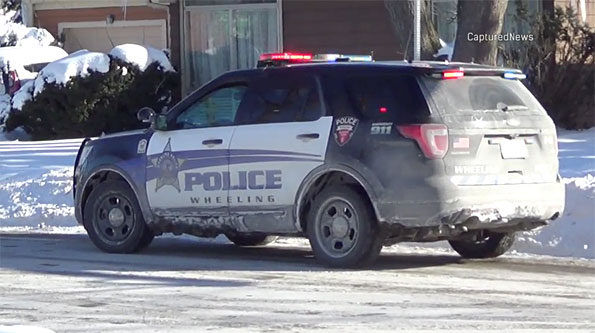Wheeling police and firefighter/paramedics responded about 12:51 p.m. Wednesday January 30, 2019 to a report that a person fainted in the block of 0-99 Jeffery Avenue. When firefighter/paramedics arrived, they discovered that nine people were in need of assessment and transport to a hospital. All nine patients, including an infant, were transported by multiple ambulances to area hospitals.

Firefighter/paramedics also discovered an outdoor portable charcoal grill fireplace in the living room that was still smoking, and being used to supplement the furnace that was heating their home, according to Wheeling Fire Department. The patients were apparently suffering from illness caused by elevated carbon monoxide levels.
Among the nine patients, there were three children, including the infant. Five patients were transported to Glenbrook Hospital in Glenview, two patients were transported to Northwest Community Hospital in Arlington Heights, and two patients were transported to Advocate Lutheran General Hospital in Park Ridge. They were listed in “stable condition.”
Additional firefighter/paramedics were requested to responded to the scene, and the incident required 16 firefighter/paramedics, four ambulances, an engine crew and a Battalion Chief to manage the scene. Wheeling Fire Department reported that the ambulances were staffed with additional personnel due to the subzero temperatures Wednesday.

Wheeling Fire Department stated its investigation found the house had no working carbon monoxide detectors. However, firefighters measured the carbon monoxide with their own instruments.
Wheeling Fire Department firefighters measured carbon monoxide levels over 400 parts per million (ppm) in the home, according to a news release. Levels of carbon monoxide at 420 ppm are considered “disabling” within 10 minutes, and may cause cardiac effects or problems in people with existing coronary artery disease. Carbon monoxide is damaging to heart muscle, and if it doesn’t kill a person, it can still cause damage to the heart — even among healthy people without coronary artery disease. Carbon monoxide levels at 420 ppm are categorized at AEGL-2, which is one of three guidelines that categorize threshold exposure limits.
AEGL Categories
According to a study published by the National Academy of Sciences, the National Advisory Committee for Acute Exposure Guideline Levels for Hazardous Substances (NAC/AEGL Committee) has been established to identify, review, and interpret toxicologic and other scientific data, and develop AEGLs for high-priority, acutely toxic chemicals, including carbon monoxide.
Acute Exposure Guideline Levels (AEGLs) for Hazardous Substances, such as carbon monoxide represent threshold exposure limits for the general public and are applicable to five exposure periods ranging from 10 minutes to 8 hours. Three levels (AEGL-1, AEGL-2, and AEGL-3) are developed for each of the five exposure periods (10 minutes, 30 minutes, 1 hour, 4 hours, and 8 hours) and are distinguished by varying degrees of severity of toxic effects. The AEGLs are expressed in ppm or milligrams per cubic meter. Carbon monoxide is usually expressed in ppm in fire department emergencies.
AEGL-1 involves non-disabling symptoms, AEGL-2 involves disabling cases, and AEGL-3 involves lethal cases.
At the AEGL-2 level with 420 ppm of carbon monoxide in the air, it takes only 10 minutes for any person to become sick enough to become disabled. Levels of carbon monoxide of 1700 ppm in the air are categorized as AEGL-3, and result in death in as little 10 minutes. An exposure of carbon monoxide levels of about 400 ppm between 30 minutes and one hour also falls into the AEGL-3 category. In other words, if the patients in the house were exposed to a level of carbon monoxide over 400 ppm for 30 minutes to one hour, they would have likely died. Remember that the levels to 400 ppm of carbon monoxide would not have occurred instantly, but would have gradually increased to 400 ppm and beyond as the carbon monoxide filled the house while the charcoals were burning. Therefore, the patients in the house may have been exposed to the burning charcoal for more than 10 minutes prior to the first person fainting, but they also could have died in less than 30 minutes after the first person fainting if the carbon monoxide levels continued to rise. The figures demonstrate how close this incident was to becoming a major tragedy.

The Environmental Protection Agency has defined that carbon monoxide in the air should not exceed 35 parts per million for more than one hour in any single year, and carbon monoxide should not exceed 9 ppm for more than eight hours in any single year.

See also …
EPA | National Ambient Air Quality Standards (NAAQS) Table
National Academy of Science | Carbon Monoxide Acute Exposure Guideline Levels
Stay informed with news from The Cardinal’s Emergencies Behind the Scenes Facebook page — Facebook.com/CardinalEmergencies. Includes links to favorite public safety and emergency rescuers and product manufacturers and safety companies that have facebook pages. Submit your pictures or just stay up-to-date on with fire, rescue, EMS and police photo galleries. Please add your public safety photo to the wall album — go direct to the Arlington Cardinal Emergencies Behind the Scenes photos. For a list of all of The Cardinal Facebook fan pages, go to Arlingtoncardinal.com/about/facebook …
Help fund The Cardinal Arlingtoncardinal.com/sponsor
